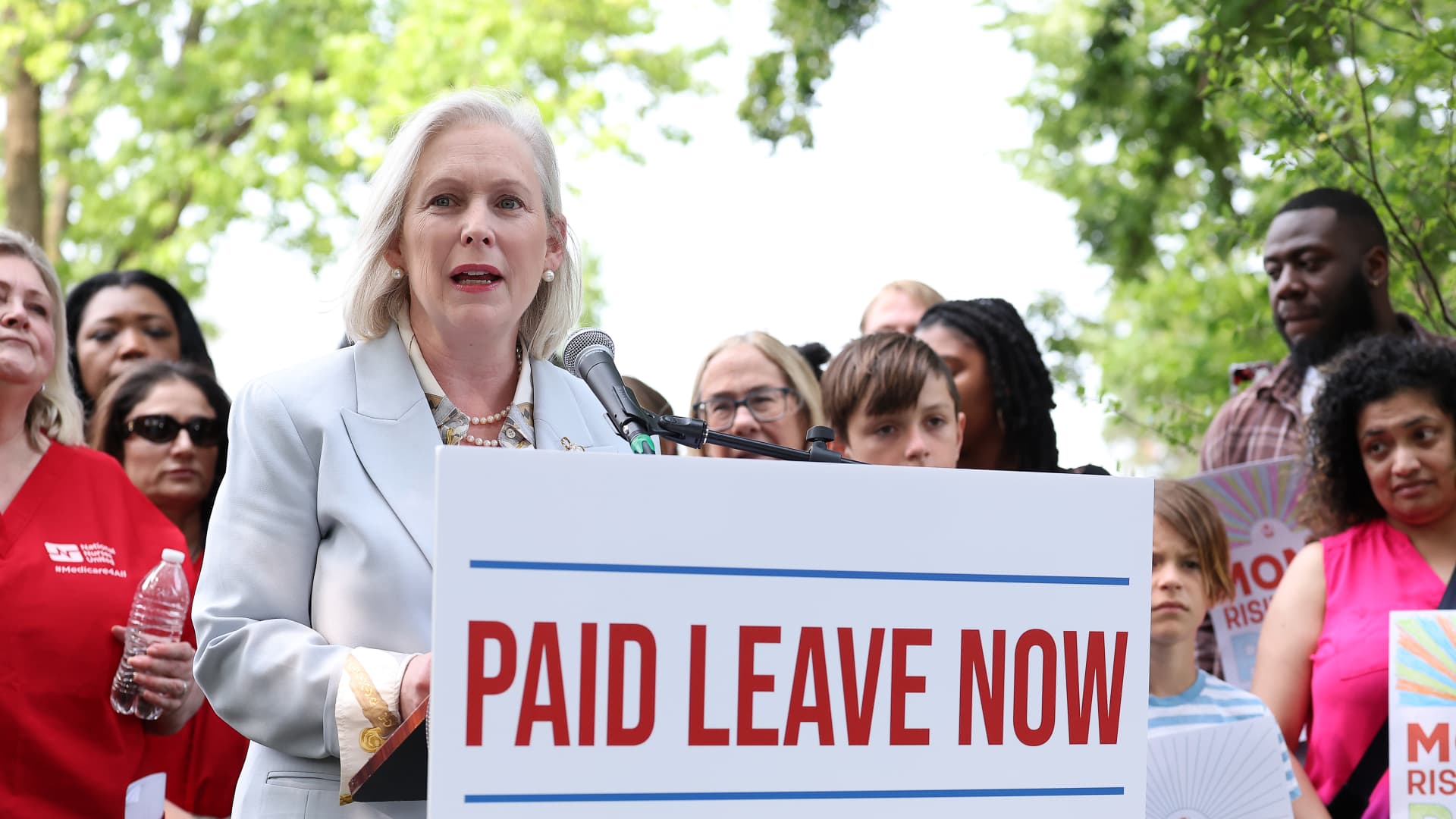Many workers need to take leave at some point to address their own health needs or to care for a loved one. Yet whether workers have access to those benefits is up to their employer or state.
This week, Democrats in Washington re-upped a push to create a national program to give every worker access to paid family and medical leave.
“After 10 years fighting for paid leave, we are still the only industrialized nation without this essential program,” said Sen. Kirsten Gillibrand, D-N.Y.
More from Personal Finance:
70% of Americans “financially stressed”, CNBC survey finds
Amid economic uncertainty, recession talk, how to save, invest
When taking out a 401(k) loan actually ‘makes sense’
A law that lets workers take unpaid time off to take care of their loved ones or their own health — the Family and Medical Leave Act — recently reached its 30th anniversary.
Now, Gillibrand and Rep. Rosa DeLauro, D-Conn., are putting forward an updated version of the Family and Medical Insurance Leave, or FAMILY, Act.
“Thirty years ago, we broke ground by enshrining the Family and Medical Leave Act into law, providing unpaid family and medical leave for working Americans,” DeLauro said in a statement, referencing the law passed under President Bill Clinton.
“Let’s break ground again by making it paid,” DeLauro said.
What new paid family leave proposal would cover
The new version of the proposal comes after Democrats had previously reduced their proposal to four weeks’ leave with the hopes of getting it included in a broader package.
The bill now includes partial income for up to 12 weeks’ leave. The typical full-time worker would earn about two-thirds of their normal wages, while low-wage workers would be compensated for around 85%.
The plan covers leave for workers’ and family members’ serious health conditions, or the birth or adoption of a child.
The new version of the bill would provide leave for workers to address the effects of domestic violence or sexual assault.
Other updates to the bill aim to update the definition of the modern family.
That includes a broader range of caregiving relationships, including spouses, domestic or civil union partners, children of any age and their spouses, parents and their spouses, siblings and their spouses, grandparents and their spouses, grandchildren and their spouses, and other individuals related by either blood or kinship.
After 10 years fighting for paid leave, we are still the only industrialized nation without this essential program.Kirsten GillibrandU.S. senator from New York
The bill would cover any worker who has earned at least $2,000 in the past two years, regardless of whether those earnings are covered by Social Security taxes. It would also eliminate an unpaid waiting period for benefits, which previously made it so benefits were not available for the first five days of caregiving.
The proposal would be paid for through a 0.4% payroll tax that would apply to the Medicare taxable wage base.
Workers would still be able to receive paid leave through state programs, as long as the states can demonstrate they are at least as generous as the federal program.
‘Some real momentum’ on paid leave
Research has shown that enacting a federal paid family leave program would have positive benefits.
Workers missed out on roughly $28 billion more in wages between March 2020 and February 2022 compared to the previous two years, research from the Urban Institute has found.
But the challenge is getting bipartisan agreement on a plan. Support for the FAMILY Act in both houses has traditionally been Democrats, noted Kathleen Romig, director of Social Security and disability policy at the Center on Budget and Policy Priorities.
“To get anything to get anything to move in this Congress, you need both Republicans and Democrats,” Romig said.
While Republicans have shown interest in implementing paid leave policies, a sticking point between the parties has been how to pay for those plans.
While Democrats have proposed funding paid leave through payroll taxes, Republicans have generally talked about funding such a plan by having people borrow against other benefits, such as Social Security benefits or child tax credits, Romig noted.
Still, there is some reason to be optimistic about paid leave, Romig said.
“While I don’t think this particular bill is going to be passed into law this year, I also think there is some real momentum here,” Romig said.
